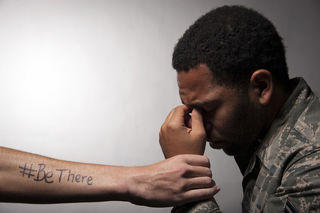Guilt
Two Types of Guilt
How remorse can obstruct or facilitate healing.
Posted October 11, 2019 Reviewed by Jessica Schrader

Canadian psychoanalyst Don Carveth identifies two types of guilt, persecutory guilt and reparative guilt. Carveth suggests this distinction is essential to mental health. He reminds us that Freud conflated the two types of guilt, writing only of remorse arising from what he called the "superego," which reflects the morals learned from parents, teachers and society. The problem, Carveth advises, is the values we learn from society often include attitudes of prejudice such as sexism, racism, and homophobia.
My recent post described persecutory guilt, a form of self-inflicted punishment whereby hostility is turned against the self. This dynamic results in acts of self-sabotage and other self-limiting ways of being. Psychic development leads to reparative guilt or what Melanie Klein called “depressive guilt.”
Klein was a British psychoanalyst who observed children’s play and described a primary conflict in the infant between love and hate. From birth onward, the child embarks on a relationship with objects, primarily the mother and, more specifically, her breast. Klein and her followers see object-relations as the center of emotional life.
In the first three to four months of life, the infant wants the mother’s breast to subdue hunger, for the pleasure that accompanies feeding, and for the security and love of it. But when these expectations go unfulfilled—when the breast is absent and hunger cravings persist or there is other environmental failure—feelings of helplessness and rage ensue. Klein argued the infant has fantasies (she wrote “phantasies”) of biting, mangling, and destroying the (bad) breast—the source of this frustration. This aggression in turn gives rise to unconscious guilt and anxiety of a persecutory nature. Such aggression and guilt also stimulate the impulse toward reparation around the first year of life, the urge “to restore and to make good,” says Klein, “to put back into his mother the good things he had robbed her of in phantasy.” These various feelings are part of every infant’s struggle in the emotional situation with the primary caregiver, and play a role in the development of certain behaviors in adulthood.
Making reparation, for Klein, is essential to the experience of love and of the ability to receive love and goodness from others and the outside world. This drive for restoration is transferred to constructive pursuits in adulthood, too, such as the making of art, and other creative activities far from the original interactions with a primary caregiver. As Klein understands it, a person’s desire for reparation and the re-discovery of the mother’s body of our earliest days—its abundance, nurturance, and provision—“is also of the greatest importance in creative art and in the ways people enjoy and appreciate it.”
Reparative guilt is sign of emotional growth, both in infancy and adulthood. It involves facing the injury one has done to another, then making efforts to repair the damage and restore the relationship. This is different from persecutory guilt. Carveth illustrates the distinction this way: “If I injure someone and while he bleeds I self-flagellate, that is punitive guilt; but if I put down my cat-o-nine-tails and reach for my first-aid kit and start bandaging, that is reparative guilt.” Persecutory remorse is focused on the self. By contrast, reparative guilt addresses the well-being of another.
In adult life, reparative guilt leads to apology, acts of material compensation, and other efforts at healing based on concern for the other. Reparative guilt is not so overwhelming as to induce humiliation in oneself or hopeless despair. Instead, it is cued by disapproval, empathy, and conscience, which is more like a good parent than a cat-o-nine-tails. When one has injured another, rather than attacking or devaluing oneself, conscience, according to Carveth, is “sad, concerned and ever hopeful of a turning.” We need less persecutory guilt and more of the reparative kind.
Carveth makes a critical point. Persecutory guilt defends against reparation. In this way, it obstructs healing. It prevents one from acknowledging fault and healing a historical hurt. Why is it so painful to recognize one's own wrongdoing? There is a narcissistic hurt that comes with acknowledging fault in oneself. In such moments, to recognize fault is to revert to a self-concept as all-bad. Unable to hold onto some aspect of fundamental goodness in oneself – one slips into a self-image as morally corrupt. This a psychological state of mind that Klein described as the “paranoid-schizoid” dynamic, which develops alongside persecutory guilt. This condition, characteristic of the earliest infant, perceives the world in pairs of opposites. This state of mind uses black and white thinking, splitting both self and other into absolute "good" and "bad" with little or no gradation between the two. Persecutory guilt protects against this kind of hurt and the view of self as totally lost or irredeemable. Instead of regressing to these early emotional states of infancy, Carveth suggests we “become conscious of our guilt without totalizing it.”
Through insightful amplification of these guilt dynamics, we are given a window into pathological grief, within the clinical setting and beyond—into the purview of societal groups. Large groups mourn like people do, and they also encounter obstacles to healthy grieving. Recognizing different forms of guilt and how they work together sheds light on the psychological barriers that contribute to thwarted grief. It helps us understand the inability to mourn in people and in large groups.
Follow me on Twitter.
References
Carveth, Donald L. Psychoanalytic Thinking: A Dialectical Critique of Contemporary Theory and Practice. Routledge, New York: 2018.
Klein, Melanie, and Joan Riviere. Love, Hate and Reparation. Norton, New York: 1964.




